Odisha’s population growth rate consistently declines
Odisha’s present fertility rate is just 1.8 and it is expected to further reduce to 1.2 in 2036. This apart in three districts – Rayagada, Nabarangpur and Kandhamal — the demographic transition will be higher that is expected to exceed two, indicating a significant regional inequality in demographic transition by 2036, said noted educationist, Professor Amitabh Kundu at the Odisha Vikash Conclave 2023 organised on 7th December by CYSD in partnership with UNFPA.
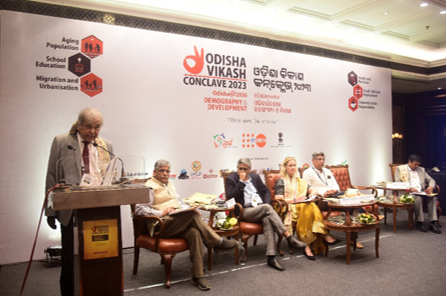 Addressing the inaugural session of the Odisha Vikash Conclave 2023, Professor Kundu said government policies and schemes need to be aligned to tackle the challenges posed by demographic transition, with a greater emphasis on social security support. Demographic transition in Odisha, according to experts, began in 1992-93. The population growth rate in the state was below 10 per cent during the last decade (2011-2021). It has consistently declined compared to the national level. Previously, Odisha’s population, representing 4 per cent of India’s total, has now reduced to 3.5 per cent.
Addressing the inaugural session of the Odisha Vikash Conclave 2023, Professor Kundu said government policies and schemes need to be aligned to tackle the challenges posed by demographic transition, with a greater emphasis on social security support. Demographic transition in Odisha, according to experts, began in 1992-93. The population growth rate in the state was below 10 per cent during the last decade (2011-2021). It has consistently declined compared to the national level. Previously, Odisha’s population, representing 4 per cent of India’s total, has now reduced to 3.5 per cent.
As the state’s aging population is projected to reach 17 per cent by 2036, the state has a unique opportunity to harness the potential arising from demographic transition, observed Shri Jagadananda, a noted social scientist and Co-founder of CYSD. “This dividend can be tapped in two ways: first, the Gender Dividend, which involves utilizing the untapped potential of the aging female population; and second, the Silver Dividend, which entails leveraging the knowledge and expertise of older individuals,” he added. Dr. R Balakrishnan, Chief Advisor at the Office of the Chief Minister, Odisha, mentioned that the state budget outlay has leaped from Rs 1 crore in 1936 to Rs 2 lakh crore now, indicating steady economic progress in the state. He underscored that Odisha’s development model is equity-based and inclusive, striving to reach the last mile individuals. Such a development model needs to be adopted nationwide. He promised to take forward the recommendations of the OVC to the appropriate level to transform them into action.
Ms. Andrea Wojnar, Country Head of the United Nations UNFPA (United Nations Population Fund), underscored that UNFPA will continue to support in conducting intensive research on new themes related to demography and development in India.
The OVC-2023 opening session was participated by 400 delegates comprising civil society leaders, government officials, think tanks, representatives from corporate houses, academicians, researchers, CBO leaders, PRI representatives and media representatives. The opening session was followed by six different thematic sessions and way forward sessions.
Akshay Kumar Sahoo
Deccan Chronicle.

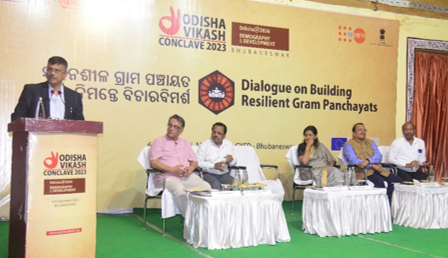
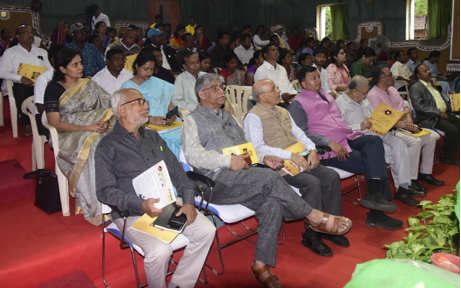 He underlined the need for an inclusive approach in the Panchayati Raj Institutions (PRIs) system to ensure that the last-mile individuals are covered under social security.Emphasising on the need to check distressed migration to ensure rural prosperity, Shri Anshuman Karol, Lead Governance and Climate Action, Society for Participatory Research in Asia (PRIA), stated that Panchayats play a pivotal role in planning and structuring employment in villages to reduce migration.
He underlined the need for an inclusive approach in the Panchayati Raj Institutions (PRIs) system to ensure that the last-mile individuals are covered under social security.Emphasising on the need to check distressed migration to ensure rural prosperity, Shri Anshuman Karol, Lead Governance and Climate Action, Society for Participatory Research in Asia (PRIA), stated that Panchayats play a pivotal role in planning and structuring employment in villages to reduce migration.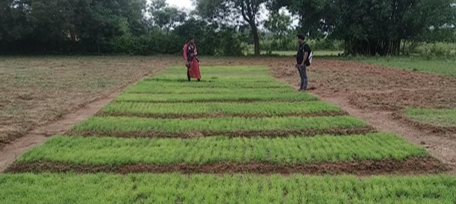
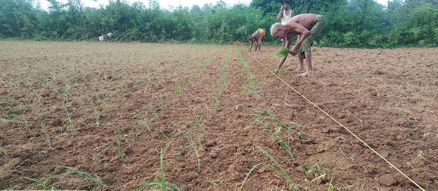 By adopting millet cultivation, Janardhan improved his agricultural yield and ensured a more stable income source. Ragi millets being known for their resilience and lower water requirements, make them ideal for this region. Janardhan also diversified his crops by cultivating paddy, millets and vegetables, reducing the risk of crop failure.
By adopting millet cultivation, Janardhan improved his agricultural yield and ensured a more stable income source. Ragi millets being known for their resilience and lower water requirements, make them ideal for this region. Janardhan also diversified his crops by cultivating paddy, millets and vegetables, reducing the risk of crop failure.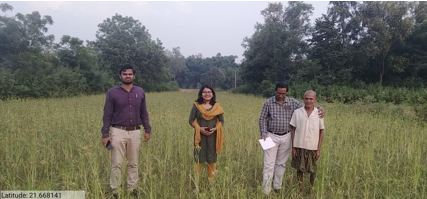 Other farmers in Tavasarua are closely observing Janardhan’s progress with millet cultivation. The village is excited about the potential of millets which will provide a more sustainable and reliable source of income. Janardhan’s journey into millet cultivation represents a promising new chapter for Tavasarua. While the millet crops are not yet matured, the shift towards more resilient and water-efficient farming practices is a step in the right direction. The community’s confidence and willingness to adapt to new agricultural methods highlight the potential for a brighter and more sustainable future for the village. “I am thankful to the Odisha Millets Mission and CYSD for inspiring me to cultivate millets and providing ample technical knowhow to this effect”, said Janardhan with full of cheerfulness.
Other farmers in Tavasarua are closely observing Janardhan’s progress with millet cultivation. The village is excited about the potential of millets which will provide a more sustainable and reliable source of income. Janardhan’s journey into millet cultivation represents a promising new chapter for Tavasarua. While the millet crops are not yet matured, the shift towards more resilient and water-efficient farming practices is a step in the right direction. The community’s confidence and willingness to adapt to new agricultural methods highlight the potential for a brighter and more sustainable future for the village. “I am thankful to the Odisha Millets Mission and CYSD for inspiring me to cultivate millets and providing ample technical knowhow to this effect”, said Janardhan with full of cheerfulness.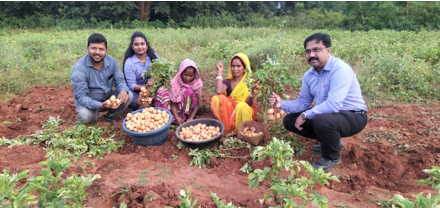
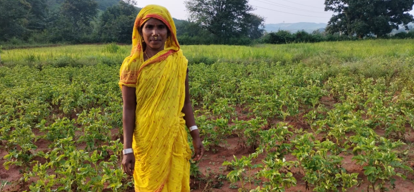 After getting involved in a village-level community mobilization meeting organized by CYSD, Kamala decided to take up the challenge of cultivating monsoon potato in her sloppy land. Although it was her first attempt, the guidance provided by the CYSD expert team increased her apprehensions.
After getting involved in a village-level community mobilization meeting organized by CYSD, Kamala decided to take up the challenge of cultivating monsoon potato in her sloppy land. Although it was her first attempt, the guidance provided by the CYSD expert team increased her apprehensions.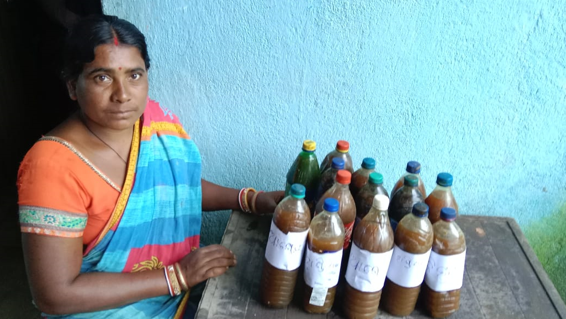
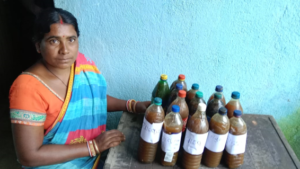 When Damayanti was asked about the results of bio-pesticide use instead of chemical pesticides, she replied that application of bio-pesticide has effectively controlled pests without damaging the soil and saved my input cost by 50%. This indicates the significant financial benefits of such techniques.
When Damayanti was asked about the results of bio-pesticide use instead of chemical pesticides, she replied that application of bio-pesticide has effectively controlled pests without damaging the soil and saved my input cost by 50%. This indicates the significant financial benefits of such techniques.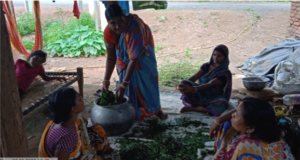 On realization of the actual value of this product, Demayanti eagerly wanted to know more about the product and the process of preparation and sought the technical guidance of Purnima, a master trainer in NPM. Knowing Damayanti’s interest in NPM, Purnima offered her training. Last year, Damayanti prepared 200 Ltr. Agneyastra for application in her own land and sold the surplus products.
On realization of the actual value of this product, Demayanti eagerly wanted to know more about the product and the process of preparation and sought the technical guidance of Purnima, a master trainer in NPM. Knowing Damayanti’s interest in NPM, Purnima offered her training. Last year, Damayanti prepared 200 Ltr. Agneyastra for application in her own land and sold the surplus products.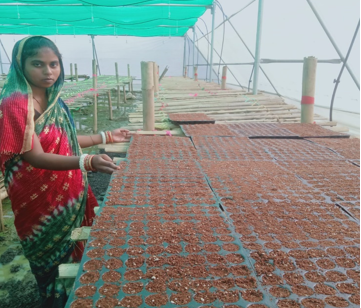
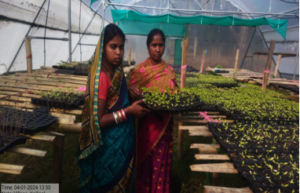 Malti Mohanta from Chamapjhar, an amateur agri-entrepreneur has adopted seedless nursery as a livelihood option to supplement her family’s income. Malti resides with her husband Deepak Mahanta in a joint family. They cultivate paddy for home consumption purposes, but they are ignorant of the opportunity to increase their income through other agricultural activities and selling the produce in the market. But, Malti getting out of household chores could bring change in her family’s livelihood when CYSD intervened in her area with Agriculture Production Cluster (APC) program in partnership with Bharat Rural Livelihood Foundation (BRLF) through formation of Producer Groups and followed by various capacity building orientations.
Malti Mohanta from Chamapjhar, an amateur agri-entrepreneur has adopted seedless nursery as a livelihood option to supplement her family’s income. Malti resides with her husband Deepak Mahanta in a joint family. They cultivate paddy for home consumption purposes, but they are ignorant of the opportunity to increase their income through other agricultural activities and selling the produce in the market. But, Malti getting out of household chores could bring change in her family’s livelihood when CYSD intervened in her area with Agriculture Production Cluster (APC) program in partnership with Bharat Rural Livelihood Foundation (BRLF) through formation of Producer Groups and followed by various capacity building orientations.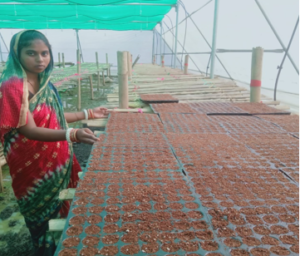 Malti’s unwavering determination to become a successful agri-entrepreneur brought her in contact with the CYSD program team. After listening to her carefully, the program team committed to help Malti fulfil her dream. The team discussed with various government departments and finally the horticulture department came one step ahead to support Malti under the RKVY scheme. After completion of the formalities between Malti and the Department of Horticulture, she started the venture in Aug-2023. The total cost of the project being Rs 6,56,314/-, Malti contributed Rs 2,84,782/- and the RKVY scheme granted Rs. 3,71,532/- for this venture.
Malti’s unwavering determination to become a successful agri-entrepreneur brought her in contact with the CYSD program team. After listening to her carefully, the program team committed to help Malti fulfil her dream. The team discussed with various government departments and finally the horticulture department came one step ahead to support Malti under the RKVY scheme. After completion of the formalities between Malti and the Department of Horticulture, she started the venture in Aug-2023. The total cost of the project being Rs 6,56,314/-, Malti contributed Rs 2,84,782/- and the RKVY scheme granted Rs. 3,71,532/- for this venture.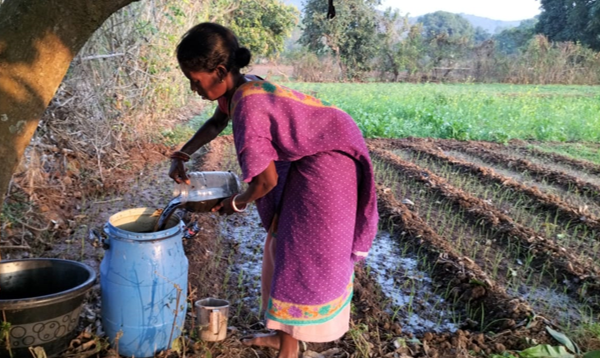
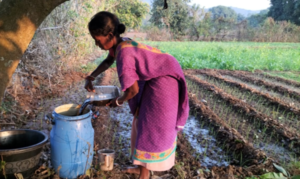 In the training, Surai learned about the Natural Farming Practices by applying non-pesticide management (NPM), a methodology that enables farmers to create bio-fertilizers using locally available materials. Realizing the potential of producing homemade bio-fertilizers, Surai could foresee the opportunity to address the high-cost fertilizers challenges, which was not economically viable for a joint family like her.
In the training, Surai learned about the Natural Farming Practices by applying non-pesticide management (NPM), a methodology that enables farmers to create bio-fertilizers using locally available materials. Realizing the potential of producing homemade bio-fertilizers, Surai could foresee the opportunity to address the high-cost fertilizers challenges, which was not economically viable for a joint family like her.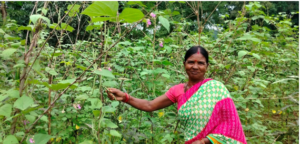 Surai’s enthusiasm for NPM use went beyond her family’s fields. She had recently sprayed Jeevamrit in her paddy field to observe the results and has started making Ghanajeevamrit for the upcoming kharif crop, being a sustainable practice that can be stored for the entire crop season.
Surai’s enthusiasm for NPM use went beyond her family’s fields. She had recently sprayed Jeevamrit in her paddy field to observe the results and has started making Ghanajeevamrit for the upcoming kharif crop, being a sustainable practice that can be stored for the entire crop season.